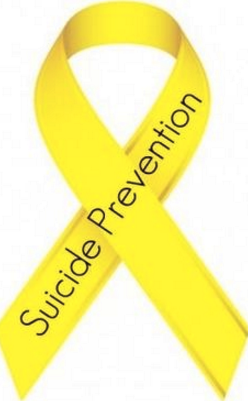Mental Health Update | Certain Behaviors Often Precede Suicide Attempt

 Certain behavior patterns often precede suicide attempts in individuals with depression, hint results of a large multi-national study.
Certain behavior patterns often precede suicide attempts in individuals with depression, hint results of a large multi-national study.
Here is what they had to say: They include risky behavior, psychomotor agitation, impulsivity, and the presence of "depressive mixed states," the investigators say.
"The results of this study are important because they may guide clinicians (from general practitioners to specialists) to which symptoms to pay special attention to, and to search for, in any depressed patient," Dr. Dina Popovic, psychiatrist at the Hospital Clinic of Barcelona, Spain, told Reuters Health by email.
Results of the BRIDGE-II-MIX study were released August 30 at the 28th European College of Neuropsychopharmacology (ECNP) Congress in Amsterdam, the Netherlands.
The study included 2,811 patients suffering from depression, of whom 628 had a prior suicide attempt. The researchers looked for differences in the characteristics and behaviors of those who did and did not attempt suicide.
They found that "depressive mixed states" in which a patient is depressed but also has symptoms of excitation or mania, often precede suicide attempts. "In fact, 40% of all the depressed patients who attempted suicide had a 'mixed episode' rather than just depression," Dr. Popovic noted in a statement from the conference.
"We also found that the standard DSM criteria identified 12% of patients as showing mixed states, whereas our methods (research-based diagnostic criteria, RBDC) showed 40% of at-risk patients. This means that the standard methods are missing a lot of patients at risk of suicide," she added.
In a second analysis of the data, the researchers found that depressed patients who display risky behavior (such as reckless driving or promiscuous behavior), psychomotor agitation (pacing around a room, wringing one's hands, pulling off clothing and putting it back on, and other similar actions), or impulsivity, have a 50% higher risk of attempting suicide than depressed patients without these behaviors. Mixed depressive states are "hallmarks of bipolarity (and) are not difficult to detect once you know what to look for. The main difficulty is that these symptoms often won't be spontaneously reported by the patient (e.g. risky behavior), but need to be specifically asked by the clinician," Dr. Popovic told Reuters Health.
Mixed depressive states are "hallmarks of bipolarity (and) are not difficult to detect once you know what to look for. The main difficulty is that these symptoms often won't be spontaneously reported by the patient (e.g. risky behavior), but need to be specifically asked by the clinician," Dr. Popovic told Reuters Health.
"This study," she added, "will hopefully increase the awareness of clinicians to which symptoms to look for, even if some of these symptoms have been excluded from the DSM. If present, these symptoms should be addressed, and, in patients at risk, suicidal prevention techniques should be implemented," Dr. Popovic said.
Commenting on the study in a statement, ECNP President Dr. Guy Goodwin, professor of psychiatry at the University of Oxford, United Kingdom, said: "The recognition of increased activation in the context of a severe depression is an important practical challenge. While many psychiatrists recognize that this constitutes an additional risk for suicide, and would welcome better scales for its identification, the question of treatment remains challenging.
We need more research to guide us on best practice."


